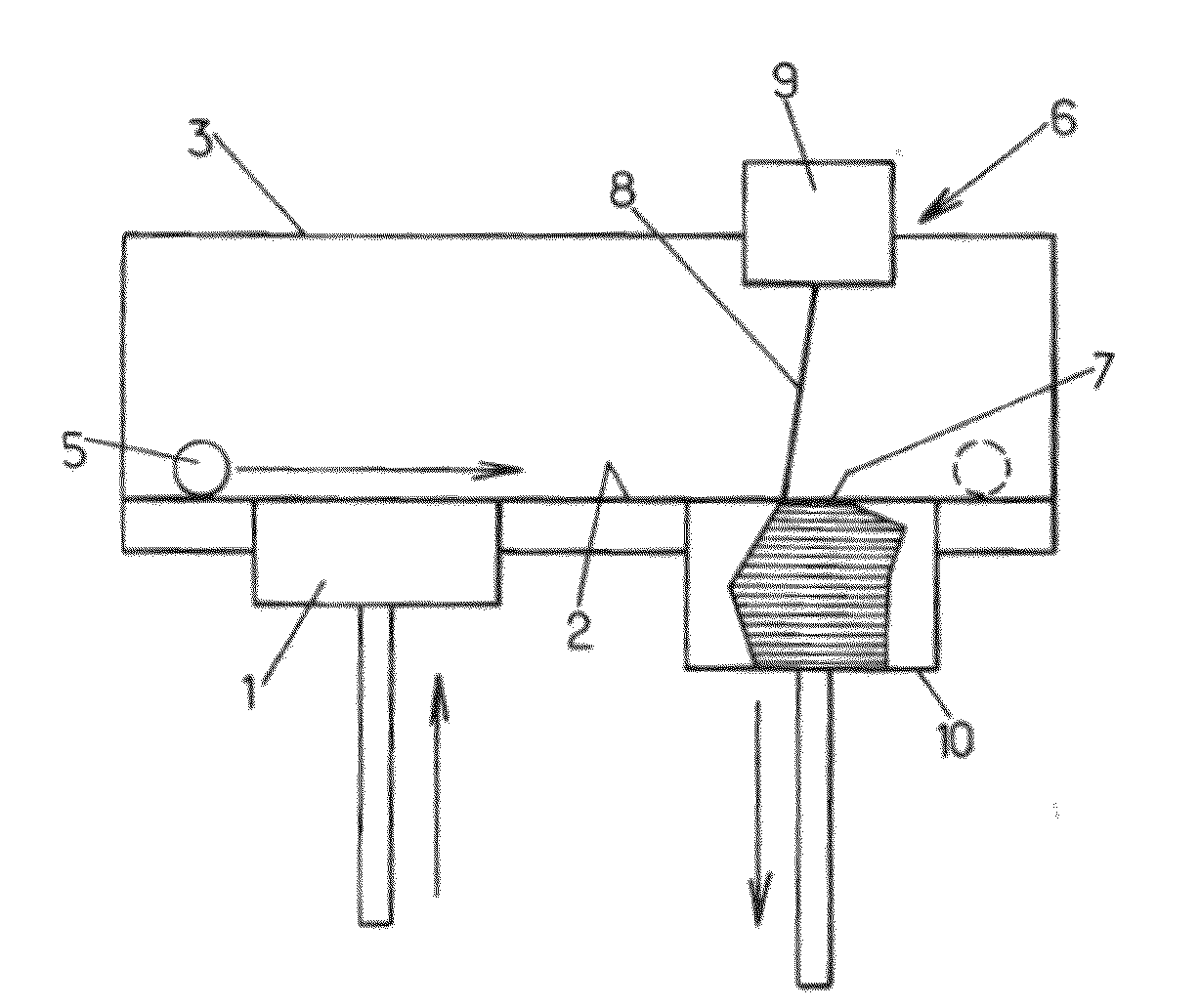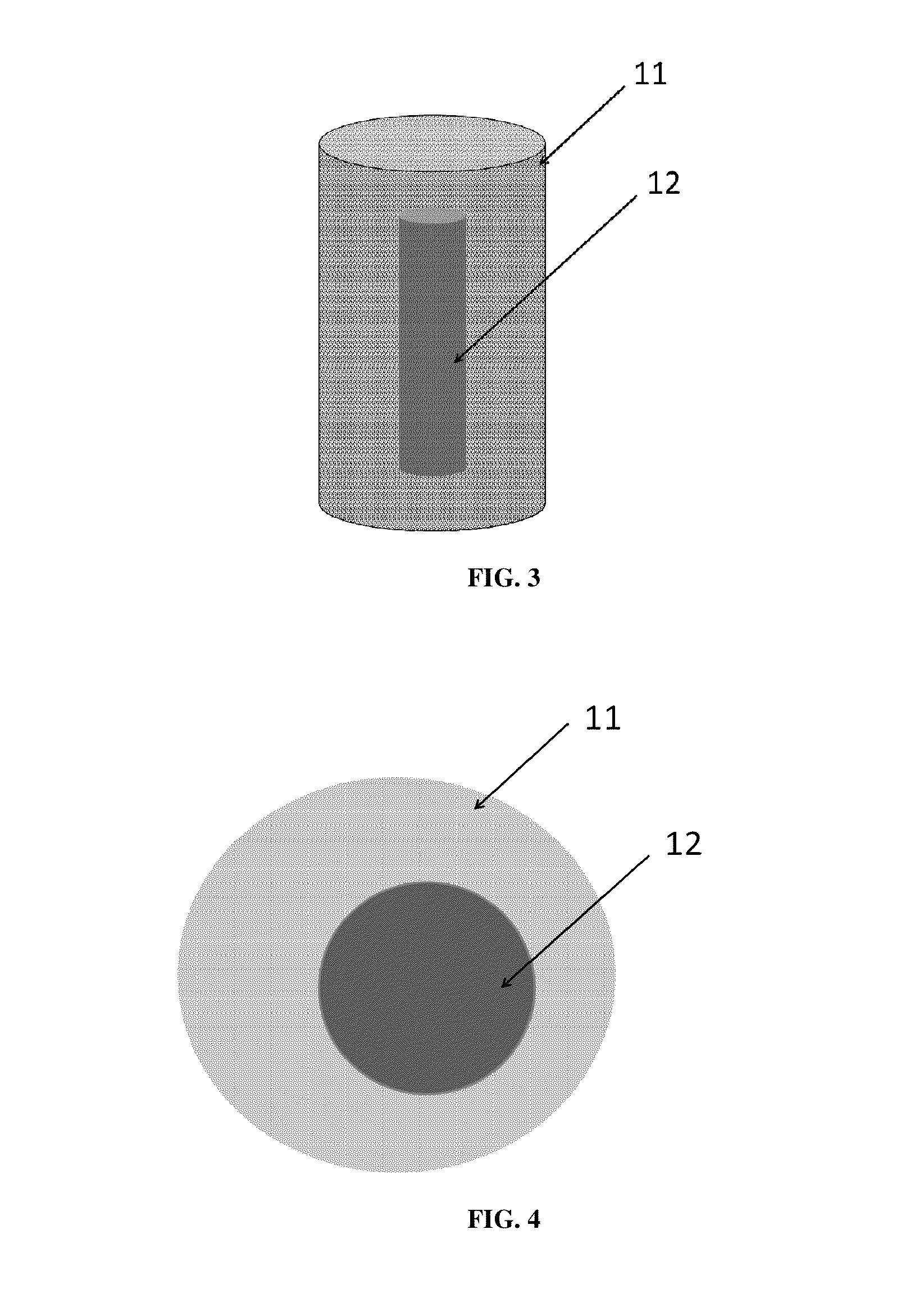Biomedical device, method for manufacturing the same and use thereof
- Summary
- Abstract
- Description
- Claims
- Application Information
AI Technical Summary
Benefits of technology
Problems solved by technology
Method used
Image
Examples
example 1
[0204]The machine used may be a Phenix® PM100 device commercialized by Phenix
[0205]Systems®.
[0206]A ceramic powder of hydroxyapatite having a granulometry 10 to 25 micrometers (commercial reference Medicoat® / Medipure® 20-15, purity>95%) is placed in a container 1 so that it can be layered on a plate 2. The tray 2 may be located in the furnace 3 of the machine 6. The powder may be heated to 800° C. The plate 2 may be supported by a tray 10 movable up and down. The powder is layered with a ceramic roll 5 at a place 7, where it will be processed by a laser beam 8 releases from a galvanometric head 9 (computer directed optical susceptible to direct a laser beam with high speed and high precision). The thickness of the resulting layer is of about 100 micrometers. A laser YAG 160 Watts is preferably used to locally impact and process the powder. The power of the laser beam may preferably be adjusted to 10% of the total power of the laser in order to avoid vitrification of the ceramic powd...
example 2
[0213]The example 1 is performed with a mixture of a first powder of hydroxyapatite and an absorbent. A powder of hydroxyapatite, having a granulometry from 5 to 25 nm and a purity above 95% (commercialized by Science Applications Industries) and an absorbent comprising carbon, having a granulometry of 40 nanometers and purity above 97%, are mixed through a wet-process; from 0.1 to 5% by weight of carbon are added to the hydroxyapatite. The mixing is conducted with a laboratory rotary evaporator, called “rotovap”, using methanol as a solvent and alumina balls to promote the mixing. The ratio between the powder and the solvent is (⅓) / (⅔). The settings are the following: temperature of 120° C., speed of 25 rpm (revolution per minute) and duration of 24 hours. The rotary evaporator removes the methanol from the pulverulent substrate by evaporation. By this process, the carbon is well dispersed in the hydroxyapatite powder. The powder is then screened with a mesh size of 50 nm to remove...
example 3
[0215]The example 2 is performed with a progression speed of the laser beam of 100 mm / s. A biomedical device for fitting bone defect having an osteoconductive first area with a controlled porosity and a porous second area is obtained.
PUM
| Property | Measurement | Unit |
|---|---|---|
| Temperature | aaaaa | aaaaa |
| Temperature | aaaaa | aaaaa |
| Length | aaaaa | aaaaa |
Abstract
Description
Claims
Application Information
 Login to View More
Login to View More - R&D
- Intellectual Property
- Life Sciences
- Materials
- Tech Scout
- Unparalleled Data Quality
- Higher Quality Content
- 60% Fewer Hallucinations
Browse by: Latest US Patents, China's latest patents, Technical Efficacy Thesaurus, Application Domain, Technology Topic, Popular Technical Reports.
© 2025 PatSnap. All rights reserved.Legal|Privacy policy|Modern Slavery Act Transparency Statement|Sitemap|About US| Contact US: help@patsnap.com



